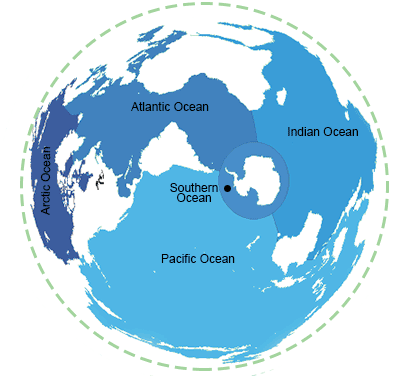This is like the tricky questions you got in high school. In a sense, there are two answers, both of them right. Strictly speaking, there is only one ocean, the great body of salt water, which altogether covers about 72% of the Earth’s surface and surrounds the planet’s great landmasses. But in more familiar terms, the one Great Ocean is divided into four principal parts, each of them known as an ocean. The Pacific covers about 18,13,00,000 square kilometers and is by far the largest ocean, containing about 46% of the Earth’s water.

The Atlantic is the second largest ocean, containing about 23% of the world’s water. It is much narrower and about half the size of the Pacific, covering about 8,22,17,000 square kilometers. The Indian Ocean is the third largest ocean. Slightly smaller than the Atlantic, it covers about 7,34,26,500 square kilometers and holds 20% of the world’s water. The Arctic, laying within the Arctic Circle and surrounding the North Pole, is the smallest ocean, which an area of about 1,39,86,000 square kilometers containing 4% of the world’s water. The Great Southern or Atlantic Ocean, which circles Antarctica, is not officially an ocean, but an extension of the southern portions of the Pacific, Atlantic and Indian Oceans.